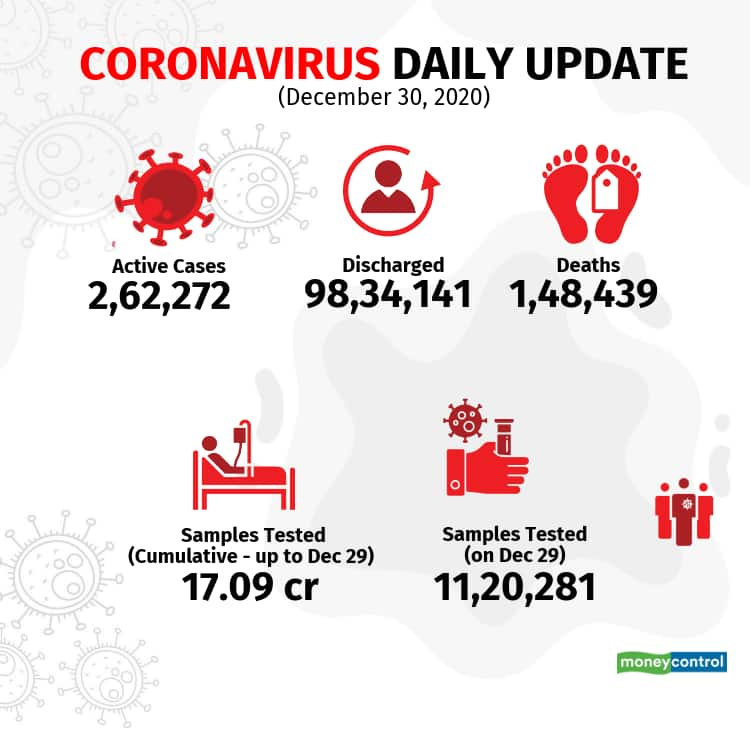Coronavirus Daily Update: COVID-19 cases explained in charts
India reported over 20,000 COVID-19 new cases according to the official update, on December 30. Active cases in India continue to slide further with a fall of over 6,000 cases in a day. Recoveries above 98 lakh with a recovery rate of 96 percent, against the world average of 70.8 percent.
December 30, 2020 / 11:16 IST
As many as 20,549 new cases of novel coronavirus were reported, with India’s total COVID-19 cases now above 1.02 crore, as per health ministry’s December 30 update.India reported 286 new deaths and 26,572 recoveries in the last 24 hours, the latest release shows. Active cases continue to drop, to 2,62,272 with a fall of 6,309 cases in a day.Kerala reported the most 5,887 (or 29 percent) new cases in the last 24 hours, followed by Maharashtra (3,018), West Bengal (1,244), Chhattisgarh (1,134), Uttar Pradesh (1,021). These five states account for 60 percent of all the new cases reported in India. 
Maharashtra reported the most (68) deaths, followed by West Bengal (30), Delhi (28), Kerala (24), Uttar Pradesh (18). These five states account for 59 percent of all the new deaths reported across the country.About 10 states and union territories like Andaman and Nicobar, Arunachal Pradesh, Chandigarh, Dadra and Nagar Haveli/Daman and Diu, Meghalaya, Mizoram, Nagaland, Sikkim and Tripura did not report any deaths today. India’s recovery rate is now 96 percent above the world average of 70.8 percent. Dadra Nagar Haveli/Daman & Diu record the highest (99.7 percent) recovery rate, while Sikkim now reports the lowest (88.7 percent). In terms of cases, Maharashtra recorded 5,572 new recoveries, the most, followed by Kerala (5,029), Chhattisgarh (1,607), West Bengal (1,587) and Uttar Pradesh (1,369).
Story continues below Advertisement
Discover the latest Business News, Sensex, and Nifty updates. Obtain Personal Finance insights, tax queries, and expert opinions on Moneycontrol or download the Moneycontrol App to stay updated!





